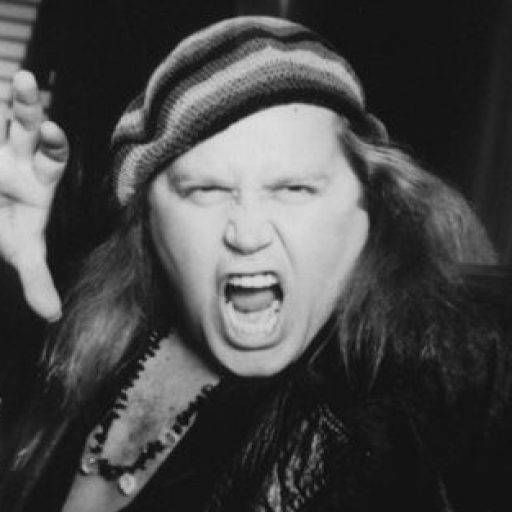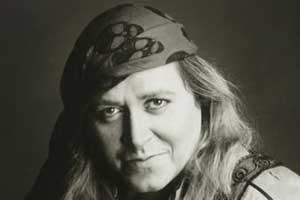By Mark Chalon Smith
Originally printed in The Los Angeles Times
Saturday, September 5, 1992
ANAHEIM — Sam Kinison lived for confrontation. No sweet words and kisses from this comic–more like up-the-volume shrieks and hisses to get his message out.
Knowing that about the man called “the beast,” a nickname Kinison did little to dispute, it was tempting to wonder what he would have thought about all the twinkling praise that engulfed his memory during a tribute at the Celebrity Theatre on Thursday. (Kinison, 38, died in April in an auto collision.)
In fact, Robin Williams was asked that very question backstage during a tightly controlled session in which the show’s performers met with the press.
“What–you want me to channel him?” Williams shot back. “We want an interview with the dead? . . . I’m sorry, but that would be Shirley MacLaine.”
It was such moments that made the backstage affair as entertaining as the official show–and probably the reason that TV cameras were rolling on both sides of the curtain. (The tribute was taped by the Fox network for future airing.)
When the good vibes weren’t on center stage, they were zipping about backstage courtesy of Kinison pals such as Williams, Rodney Dangerfield, Judy Tenuta, Pauly Shore, Richard Belzer and Jim Carrey.
Williams called Kinison the adventurous “Chuck Yeager of comedy,” and Dangerfield described him as “electrifying–someone that can’t be duplicated.” Shore, in a lavish testimonial, said, “I just clung to him. He was my comic mentor.”
Tenuta downplayed Kinison’s bad-boy image, claiming it was just a put-on for the spotlight. The Kinison that Tenuta knew was a sweetheart, good to his friends and family.
Although obviously not an evening open to many hard looks at his controversial career–this was essentially a feel-good benefit to help pay off the $1 million in debts he reportedly left behind–some of the performers did allude to Kinison’s checkered past. There were a few surprising moments, especially with Tenuta.
Angry with herself for forgetting to tell the audience a joke about her first meeting with Kinison, she offered it to the media. The gag parodied the longstanding feuds Kinison had with both feminists and homosexuals.
“Off-stage, he was really soft and sensitive,” Tenuta cooed. “I remember when we met: It was at a NOW (National Organization for Women) meeting, and he was knitting an AIDS quilt… he told me he needed to be with other men where he could cry. I told him to go to a Dodgers game.”
Williams, who pointed out that he mainly knew Kinison from his stage work and the times they ran into each other at comedy clubs, spent the longest stretch before the press, riding a wave of ad-lib.
After explaining that Kinison “pushed the limits and told comics not to be afraid to try things,” Williams offered another little known fact. “One thing I knew about him that nobody else did?” Williams repeated in response to a question, “Well, he was a woman. A black woman.”
Easily the most uncomfortable before the media was Dangerfield, who looked ready to flee at the first opportunity. (“Any more questions?” he asked–before any had been tossed out.)
Dangerfield recalled that he gave Kinison his first national exposure by including him on a Dangerfield TV special. Later, Dangerfield created a small part for him as a crazed history professor in the 1986 movie “Back to School.”
“Sam was different things to different people; I don’t know what he was,” Dangerfield said. “I do know that he was a tremendous artist; he had that stroke of genius. He had problems, just like everybody else. I do know that he must have made other comedians unhappy” because of his intimidating talent.

